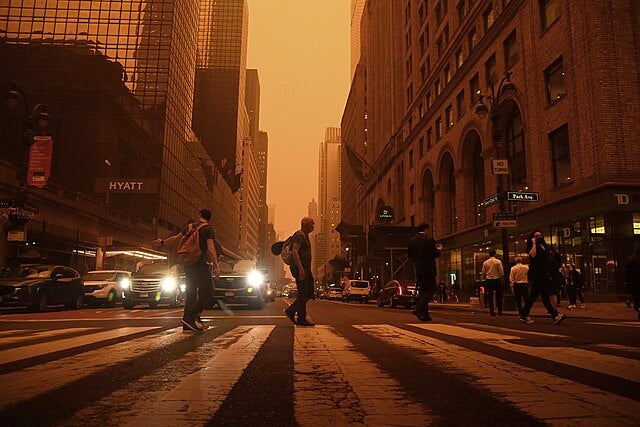Rebecca Hornbrook discusses health hazards from wildfire smoke
Canadian wildfires are spewing smoke into New York City and Washington, DC, threatening the health of millions. Welcome to the “Pyrocene.”
Wildfire smoke is a complex amalgam of materials, including burned plant material and—if buildings go up in flames—human-made stuff like plastic. What makes smoke visible are its toxic particulates—dubbed PM 2.5 and 10, meaning particles smaller than 2.5 and 10 microns. But there are a lot of invisible nasties in there too, like benzene, formaldehyde, carbon gases and even fungal pathogens.
As the smoke travels through the atmosphere, it can actually form new chemical hazards over time, like ozone, which exacerbates asthma. “The biggest health impacts are definitely from the particulate matter,” says Rebecca Hornbrook, an atmospheric chemist at the National Center for Atmospheric Research, who has flown planes through wildfire smoke to study its components. “But there are a lot of things that are emitted that are on the EPA’s list of dangerous chemicals.”
Read more at Wired; June 7, 2023.
